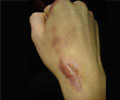A new study led by an Indian researcher has revealed that a single dose of antibiotics can significantly heal severe tearing that occurs in vaginal tissues during many births.
A single dose of antibiotics may be the answer to treat severe tearing that occurs in vaginal tissues after childbirths, a new study led by an Indian researcher has found.
The team including Dr Yasser El-Sayed, associate professor of obstetrics and gynecology and associate chief of maternal-fetal medicine at the School of Medicine, Dr Neena Duggal, from Santa Clara Valley Medical Centre and Dr Kay Daniels, clinical associate professor of obstetrics and gynecology at the School of Medicine has revealed that antibiotics can prevent wound complications of childbirth."Recovery from these tears can be painful and problematic," said El-Sayed.
"If you add an infection, or a breakdown of the surrounding tissues, it's a huge burden on the emotional and physical well-being of a new mother," he added.
One in five women suffer severe vaginal tears during childbirth. In the study, those who received the antibiotic endured roughly one-third as many infections or other wound-healing complications two weeks after surgical repair of their tears.
The team conducted a randomized, double-blind study in 147 women who experienced third- or fourth-degree tears while delivering infants at either Packard Children's Hospital or Santa Clara Valley Medical Centre.
The participants were randomly assigned to receive a one-time intravenous infusion of either antibiotic or placebo during the repair of their tear.
Advertisement
The findings revealed that four of 49 patients treated with antibiotics and 14 of 58 patients given the placebo showed symptoms of infection or breakdown two weeks after the repair.
Advertisement
"We're excited because it's such a simple intervention," said El-Sayed. The difference between the two groups persisted despite variability in surgical technique, suture and type of antibiotic.
The study appears in the June issue of Obstetrics and Gynecology.
Source-ANI
RAS/L











